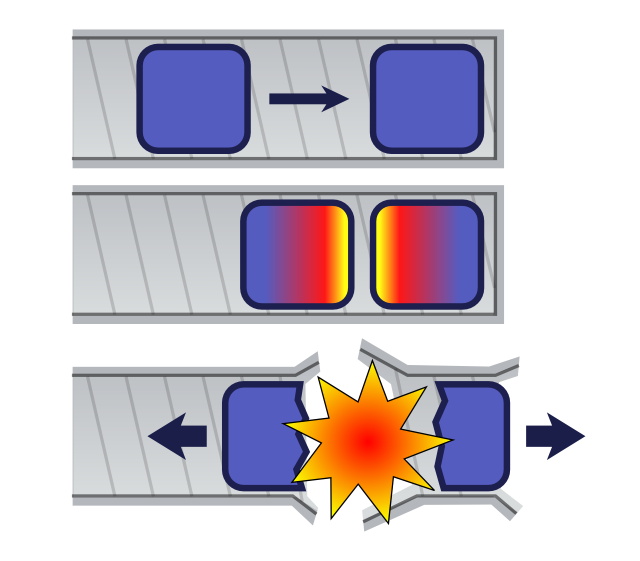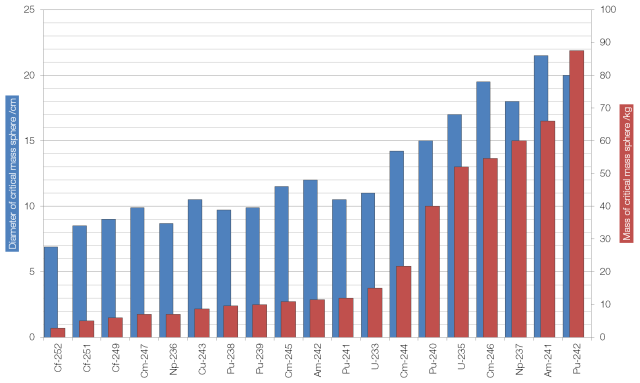In nuclear weapon design a critical mass is the minimum amount of nuclear material required to sustain the chain reaction necessary for a nuclear explosion.
There are a number of factors that affect the critical mass.
- Material, enrichment and purity: Different nuclear materials have different properties (most importantly fission cross-section). To make a nuclear weapon far less plutonium-239 is required than uranium-235, because Pu-239 has a much larger fission cross-section.
- Shape: As neutrons escape through the mass’s surface, and collide throughout the mass’s volume, it is desirable to keep the surface area to volume ratio as low as possible: a sphere is therefore the appropriate choice.
- Density: If the density of a mass is increased then the nuclei are forced closer together and the critical mass required decreases. Modern nuclear weapons use explosive lenses to compress a sub-critical mass of plutonium into a super-critical state.
- Temperature: The likelihood of fission depends on the relative velocity of the fission neutrons and the nuclei of the nuclear fuel. If the temperature of the mass is decreased, fission becomes more likely.
- Reflectors and tampers: A neutron reflector placed around the critical mass prevents neutrons from escaping and reflects them back into the mass, decreasing the critical mass required. A tamper prevents the critical mass from expanding and keeps it concentrated in a small volume, also decreasing the critical mass. In many bomb designs the reflector and tamper are the same structure.
Changing any one of these factors could allow a material to go from sub-critical to critical. For example, a rod-shaped mass suddenly compressed into a sphere could become critical, as could a warm mass that is suddenly cooled.
The graph below shows the importance of choosing a nuclear material. Many isotopes require a smaller critical mass than uranium-235 or plutonium-239 but these are unsuitable for various reasons connected to the factors listed above. For example, isotopes of californium are too radioactive, neptunium-236 is too difficult to separate from its parent isotopes and plutonium-238 releases too much heat due to alpha-decay.
A fizzle occurs when a bomb creates a critical mass too slowly and nuclear predetonation occurs, destroying the bomb before the fission chain reaction can propagate throughout it. The first North Korean nuclear test in 2006 was a fizzle, with a yield of less than one kiloton, twenty times smaller than any other country’s initial test.

In the diagram above two sub-critical masses are brought together too slowly, causing a predetonation that throws the two masses away from each other, causing a fizzle and preventing a nuclear explosion.
